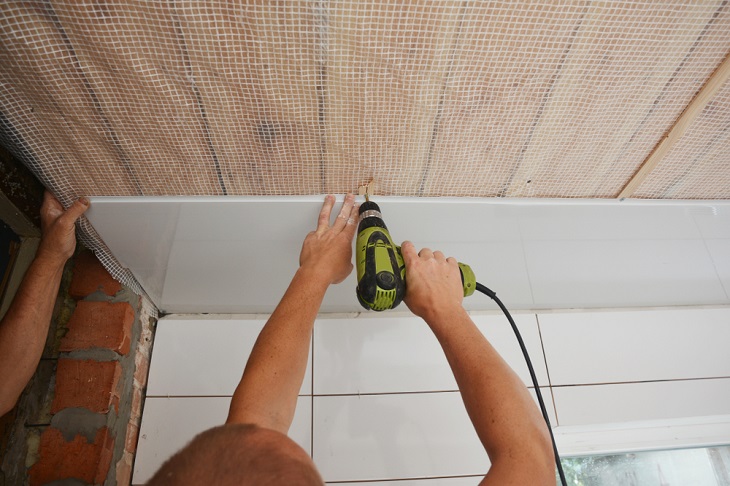A PVC ceiling cornice style is typically a molding that can be decorative or plain. It serves an aesthetic as well as a functional purpose in both residential and commercial buildings. It is typically a molding that comes in uniform pieces that can be laid side by side on the joints of walls and ceilings. With the advent of modern technologies and modern materials, cornices have become more versatile providing both functional and aesthetic appeal.
A cornice can improve the aesthetics of the PVC ceiling as the moldings can be shaped and colored to suit any kind of décor. The size of the cornice depends on the size and height of the room. Cornices also form a part of the aesthetic design which might involve a simple or complex design with multiple levels. Cornices can conform to design attributes – old-fashioned for buildings with traditional or classical design and simple and sleeker for buildings with modern designs.
8 Different styles of Plant Cornices
Various materials are used while making different kinds of cornices. The materials are manufactured by using several types of metal and non-metals. These include PVC, gypsum, paper-covered gypsum, polyurethane, POP, Glass Reinforced Concrete, and medium density fireboard, and timber.
1. PVC
The materials for PVC ceiling cornice styles that are ideally used in making cornices include cement, lime, or gypsum. But, carrying out this type of manufacturing module is sometimes impossible. The prime factors for such inability seem to be the factor of cost. The manufacturers normally coat these with oil paint. Sometimes, water-based paint is also used. These types of cornices require extreme care while installing.
2. Gypsum
Gypsums are naturally found in mines. It has a unique dissolving property in water. This property renders it acquiescent for restoring to its original state of hardness. This property has made it an excellent material for cornices. Besides, these can be shaped. The older gypsum cornices can be recycled with the new ones.
3. Paper Covered Gypsum
These are made of lime or gypsum that is pressed between two paper facers. These are occupied with all the properties of gypsum or PVC ceiling cornices styles. These are needed to be painted with oil or water-based paint to attain the required exposure of the artwork in the ceiling roses.
4. Polyurethane
This material is known for its robust construction while keeping the lightness in weight. These are available in several patterns and colors. This material can also be painted with oil or water-based paints.
5. POP
It is made of lime, cement, or gypsum and is used for making cornices, it is one of the PVC ceiling cornice styles.
6. GRC
GRC is made with a mixture of sand, cement, and water and glass fibers. It serves as an excellent option for making cornices which is more attractive than the PVC ceiling cornice styles. The material offers the benefits of lightness in weight. Besides, these demonstrate a strong and smooth finish in white or pigmented. These are easy to install and can adapt to any design. These are able to replicate the modern molding of any shape aside from providing better detail.
7. MDF
These typically building materials can be used for a variety of applications that includes building cornices too. The smooth surface pays the way for versatility in finishes. This type of flexibility is available with painting in particular. These sawdust materials fused with glue under heat and pressure exhibit beautiful cornice properties.
8. Timber
Wood is one of the most popular materials used in a variety of construction activities in buildings. Despite the ideality, the cost has always been a concern. At the same time, special treatment is required in order to prevent warping. These types of ceiling formed are unique and stylish that are totally different from the PVC ceiling cornice styles.

